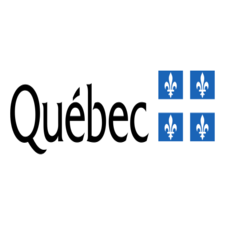DOCX
Type of resources
Topics
Keywords
Contact for the resource
Provided by
Formats
Representation types
Update frequencies
status
-

Depicts the internal boundaries of the Niagara Escarpment Plan area. The 7 land use designations are: * escarpment natural area * escarpment protection area * escarpment rural area * [minor urban centre](/dataset/minor-urban-centres-in-the-niagara-escarpment-plan) * urban area * escarpment recreation area * mineral resource extraction area The land use designations represent the internal boundaries between designations within the Niagara Escarpment Plan. These internal boundaries are not intended to be site-specific and should not be used for accurate measurements. The exact delineation of designation boundaries on specific sites will be done by the implementing body through the application of the designation criteria as outlined in Part 1 of the Niagara Escarpment Plan, utilizing the most detailed or up-to-date information available and site inspection. [More information](http://www.escarpment.org)
-

The Digital Elevation Model (DEM) data is organized into 20km x 20km tiles with a spatial resolution of 5m. This data is intended to be used for pre-engineering survey and design as well as the production of planimetric mapping at differing accuracies. This data is intended for GIS and remote sensing application that require a high resolution, high accuracy elevation model. Official GEO title: Greater Toronto Area digital elevation model 2002
-

This dataset consists of man-made point features in a transportation network. Transport point features include: * Culvert Railway Symbolized - a enclosed drain under a railway * Culvert Roadway Symbolized - an enclosed drain under a roadway * Turntable Railway - a rotatable platform with a track, used to turn locomotives and cars We are no longer updating this data. It is best suited for historical research and analysis.
-

Border crossings are a feature included on the Official Road Map of Ontario (ORM) for information purposes to the travelling public. Included are highway-land and ferry crossings. It was created as part of the Digital Cartographic Reference Base (DCRB) for the production of the ORM.
-

The dataset contains line features which define trails that are used for: * hiking * backpacking * biking * horseback riding * cross-country skiing * snowmobiling * access to campgrounds
-

Nice guys.**This third party metadata element was translated using an automated translation tool (Amazon Translate).**
-

Official place names in Quebec, except odonyms (names of communication routes).**This third party metadata element was translated using an automated translation tool (Amazon Translate).**
-

Deofficialized place names.**This third party metadata element was translated using an automated translation tool (Amazon Translate).**
-

The dataset represents prominent linear (man-made or natural) features including: * cliffs * dykes * fences * walls * hedgerows * feature outlines * racetrack centre lines * racetrack edges We are no longer updating this data. It is best suited for historical research and analysis.
-

Shows areas where forest insect pests have damaged or killed trees by defoliation, foliage mining and wood boring. Tree mortality rarely occurs as the result of one year's infestation, but from the result of several consecutive years of infestation and other contributing factors affecting weakened trees (e.g., fungal invasion). The Government of Ontario tracks forest damage events to help proactively manage the detrimental effects to our forests. We monitor the threat and spread of invasive forest pest insect species in Ontario. The data is also important to the Forest Management Planning process in calculating timber volume loss within affected areas This product requires the use of geographic information system (GIS) software.
 Arctic SDI catalogue
Arctic SDI catalogue